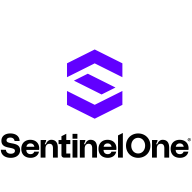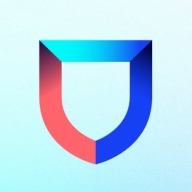


Lacework FortiCNAPP and AWS GuardDuty are leading competitors in the cloud security management category. Lacework has an advantage with its comprehensive security visibility and efficiency in multi-cloud environments.
Features: Lacework FortiCNAPP offers ease of use, real-time anomaly detection, and comprehensive compliance reporting, facilitating seamless integration across multiple cloud environments and effective alert prioritization. AWS GuardDuty stands out for its seamless integration with AWS services, competitive pricing for threat detection, and efficient log analysis.
Room for Improvement: Users suggest enhancing Lacework's IAM security controls, integration capabilities, and data governance. AWS GuardDuty could improve its analytics and cost communication transparency. Both solutions have room to expand threat intelligence data and improve dashboard engagement.
Ease of Deployment and Customer Service: Lacework FortiCNAPP excels in deploying across public and private clouds with robust, responsive support and frequent communication via Slack and community channels. AWS GuardDuty effectively manages public cloud and hybrid environments, benefiting from AWS's extensive ecosystem but with less engaged technical support post-deployment compared to Lacework's proactive service.
Pricing and ROI: Lacework FortiCNAPP users report significant ROI from reduced manual monitoring despite potentially high costs, while AWS GuardDuty's transparent and cost-effective pay-as-you-go pricing appeals to smaller organizations. Both solutions provide value, with Lacework excelling in integration efficiency ROI.



SentinelOne Singularity Cloud Security protects cloud workloads, offering advanced threat detection and automated response. It integrates seamlessly with cloud environments and secures containerized applications and virtual machines against vulnerabilities.
SentinelOne Singularity Cloud Security is renowned for its efficiency in mitigating threats in real-time. The platform integrates effortlessly with existing cloud environments, ensuring robust cloud security management with minimal manual intervention. Securing containerized applications and virtual machines, it excels in threat intelligence and endpoint protection. However, improvements are needed in performance during high workload periods, and more integrations with third-party tools and better documentation would be beneficial. Users often find the installation process complex, support response times slow, and the dashboard's navigation unintuitive.
What are the key features of SentinelOne Singularity Cloud Security?In specific industries, SentinelOne Singularity Cloud Security is implemented to safeguard critical data and infrastructure. Organizations in finance, healthcare, and technology depend on its real-time threat detection and automated response to protect sensitive information. Its ability to secure containerized applications and virtual machines is particularly valuable in dynamic environments where rapid scaling is necessary.
Amazon Guard Duty is a continuous cloud security monitoring service that consistently monitors and administers several data sources. These include AWS CloudTrail data events for EKS (Elastic Kubernetes Service) audit logs, VPC (Virtual Private Cloud) flow logs, DNS (Domain Name System) logs, S3 (Simple Cloud Storage), and AWS CloudTrail event logs.
Amazon GuardDuty intuitively uses threat intelligence data - such as lists of malicious domains and IP addresses - and ML (machine learning) to quickly discover suspicious and problematic activity in a user's AWS ecosystem. Activities may include concerns such as interactions with malicious IP addresses or domains, exposed credentials usage, or changes and/or escalation of privileges.
GuardDuty is able to easily determine problematic AWS EC2 (Elastic Compute Cloud) instances delivering malware or mining bitcoin. It is also able to trace AWS account access history for evidence of destabilization. such as suspicious API calls resulting in changing password policies to minimize password strength or anomalous infrastructure deployments in new or different never-used regions.
GuardDuty will continually alert users regarding their AWS environment status and will send the security discoveries to the GuardDuty dashboard or Amazon CloudWatch events for users to view.
Users can access GuardDuty via:
Amazon Elastic Kubernetes Service (Amazon EKS)
Kubernetes protection is an optional add-on in Amazon GuardDuty. This tool is able to discover malicious behavior and possible destabilization of an organization's Kubernetes clusters inside of Amazon Elastic Kubernetes Service (Amazon EKS).
When Amazon EKS is activated, GuardDuty will actively use various data sources to discover potential risks against Kubernetes API. When Kubernetes protection is enabled, GuardDuty uses optional data sources to detect threats against Kubernetes API.
Kubernetes audit logs are a Kubernetes feature that captures historical API activity from applications, the control plane, users, and endpoints. GuardDuty collates these logs from Amazon EKS to create Kubernetes discoveries for the organization's Amazon EKS assets; there is no need to store or turn on the logs.
As long as Kubernetes protection remains activated, GuardDuty will continuously dissect Kubernetes data sources from the Amazon EKS clusters to ensure no suspicious or anomalous behavior is taking place.
Amazon Simple Cloud Storage (S3) Protection
Amazon S3 allows Amazon GuardDuty to actively audit object-level API processes to discover possible security threats to data inside an organization's S3 buckets. GuardDuty continually audits risk to the organization’s S3 assets by carefully dissecting AWS CloudTrail management events and AWS CloudTrail S3 data events. These tools are continually auditing various CloudTrail management events for potential suspicious activities that affect S3 buckets, such as PutBucketReplication, DeleteBucket, ListBucket, and data events for S3 object-level API processes, such as PutObject, GetObject, ListObject, and DeleteObject.
Reviews from Real Users
“The most valuable features are the single system for data collection and the alert mechanisms. Prior to using GuardDuty, we had multiple systems to collect data and put it in a centralized location so we could look into it. Now we don't need to do that anymore as GuardDuty does it for us.” - Arunkumar A., Information Security Manager at Tata Consultancy Services
Lacework FortiCNAPP provides robust cloud security, combining vulnerability management and multi-cloud insight with user-friendly controls, machine learning detection, and compliance support.
Lacework FortiCNAPP specializes in cloud security by merging machine learning anomaly detection with agent-based vulnerability management to offer detailed alerts and compliance reports. Its comprehensive approach allows continuous monitoring across AWS and Kubernetes, providing insights from an attacker's perspective. The platform offers automation and seamless Slack integration, facilitating collaborative and efficient cloud security management. Users value its ability to handle multi-cloud environments and scan IAC scripts, configurations, and compute nodes across AWS and GCP.
What are the key features?Organizations across sectors leverage Lacework FortiCNAPP for cloud security, focusing on compliance, security posture, and vulnerability management. It is widely used for monitoring AWS and Kubernetes environments, scanning IAC scripts, configurations, and securing compute nodes. It supports multi-cloud security posture management and log ingestion, enabling companies to maintain strong cloud infrastructures without dedicated security layers.
We monitor all Cloud Workload Protection Platforms (CWPP) reviews to prevent fraudulent reviews and keep review quality high. We do not post reviews by company employees or direct competitors. We validate each review for authenticity via cross-reference with LinkedIn, and personal follow-up with the reviewer when necessary.